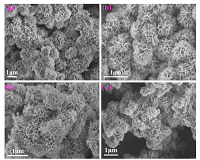
Jong-Sung Yu
Daegu Gyeongbuk Institute of Science and Technology, Republic of Korea
Title: Elastic nano-graphene-functionalized silicon anode for lithium ion battery with superior cycle stability and rate capability
Biography
Biography: Jong-Sung Yu
Abstract
Silicon (Si), one of the most promising anode materials for next generation high-performance Li-ion batteries (LIB), is popularly studied recently because of its super high lithium capacity (4200 mAh g-1). However, Si has a dramatic volume change (~300%) during charge-discharge cycling, leading to severe capacity decay and poor cycle stability originating from its structural collapse. Carbon or graphene-modified Si is an effective method to improve its performance. Traditional three models of carbon or graphene/Si-based core-shell, yolk-shell and physical wrapping have been reported recently. However, they are still insufficient in structure to solve the silicon issues. In our work, a new concept multifunctional nano-graphene shell is elaborately designed for silicon by a low-temperature chemical vapor deposition (CVD) method on a hierarchical nickel nano-template. The as-synthesized nano-graphene-functionalized silicon (Si@NG) composite shows unique functions to challenge the current silicon anode issues in LIB. The new functional nano-graphene shell gives the full consideration of Si issues such as Si conductivity, Si volume expansion, and mass transfer, which not only can supplement poor conductivity of Si, but also self-adaptively changes their space to accommodate the lithiated Si with inflated volume by their elastic feature. More importantly, different with traditional large graphene flakes, the graphene sheets in nano size has less ions barrier effect to guarantee easy Li+ and electrolyte paths. In addition, the graphene layer provides excellent protection for SEI film to guarantee high cycle stability. As an anode electrode for LIB, the Si@NG composite exhibits excellent cycling performance with high reversible specific capacity (2330 mAh g−1 at 250 mA g-1 with an initial CE of 83.4%, and 1385 mAh g−1 at 500 mA g−1 after 510 cycles with a CE of 99.2%). A superior 95% capacity retention is achieved after 510 cycles. More notably, remarkable cycling performances were obtained over harsh testing conditions of high current density and high Si@NG loading, where the Si@NG still shows several times higher capacities than commercial graphite after 1000 cycles. All the electrochemical performances get benefits from the well-designed functional graphene shells. This work demonstrates a new direction towards the development of high efficient Si anode with high capacity and super cycle stability.


